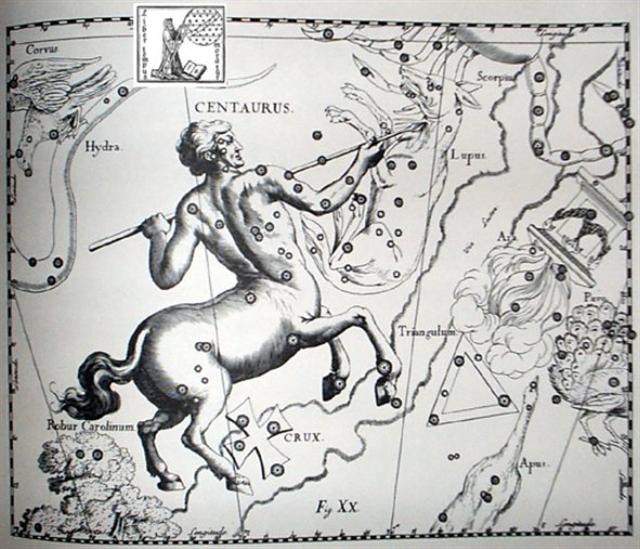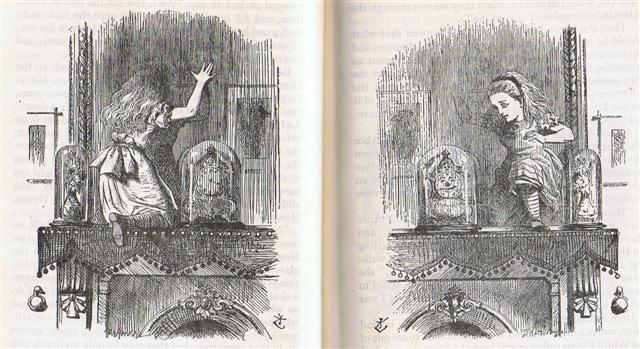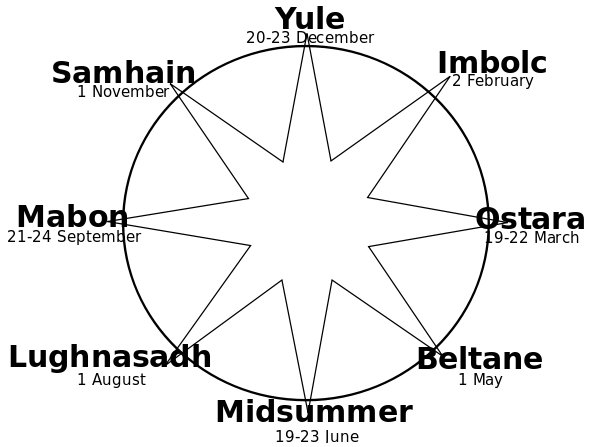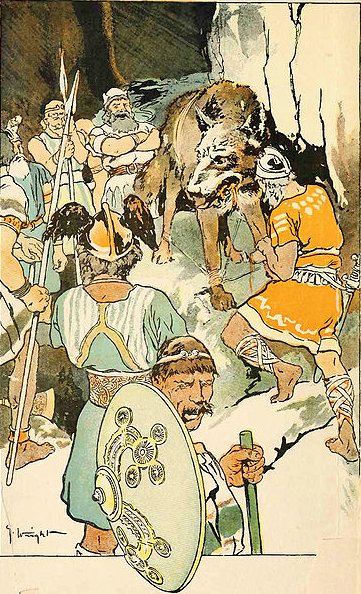Ba8.6 The Lupus (Wolf) constellation was not far after the Southern Cross (†, Crux):
From Acrux to α Lupi (Yang Mun, the South Gate) - at the left foot of Lupus (presumably a sign of leaving) - there were 35 days. Ba8-2 + 35 = Ba8-37:
Below is a quick overview of the 46 glyphs in line Ba8, where I have guessed there should be 3 days inserted between the 3rd and 4th weeks:
How little we can understand from this without support from stars and dates! We should begin by measuring from Ba8-8 (→ 64) at April 1 (91) - where the Chinese suggested Wolf - to Ba8-37 at the South Gate (the left foot of the Wolf), and 37 - 8 = 29. Which ought to correspond to day 91 + 29 = 120 (April 30). At the time of rongorongo this would have been when the Full Moon reached the right ascension line connecting to the South Gate star (for leaving).
The following day was May 1 (Beltane),
and here the Wolf surely must have been stopped (bound). But not speared as depicted by Hevelius *222 - *41 = *181 days later.
... It is known that in the final battle of the gods, the massed legions on the side of 'order' are the dead warriors, the 'Einherier' who once fell in combat on earth and who have been transferred by the Valkyries to reside with Odin in Valhalla - a theme much rehearsed in heroic poetry. On the last day, they issue forth to battle in martial array. Says Grimnismal (23): 'Five hundred gates and forty more - are in the mighty building of Walhalla - eight hundred 'Einherier' come out of each one gate - on the time they go out on defence against the Wolf.' That makes 432,000 in all, a number of significance from of old. This number must have had a very ancient meaning, for it is also the number of syllables in the Rigveda. But it goes back to the basic figure 10,800, the number of stanzas in the Rigveda (40 syllables to a stanza) which, together with 108, occurs insistently in Indian tradition, 10,800 is also the number which has been given by Heraclitus for the duration of the Aiōn, according to Censorinus (De die natali, 18), whereas Berossos made the Babylonian Great Year to last 432,000 years. Again, 10,800 is the number of bricks of the Indian fire-altar (Agnicayana) ...
|
||||||||||||||||||||||||||||||||||||||||||||||||||||||||||||||||||||||||||||||||||||||||||






















